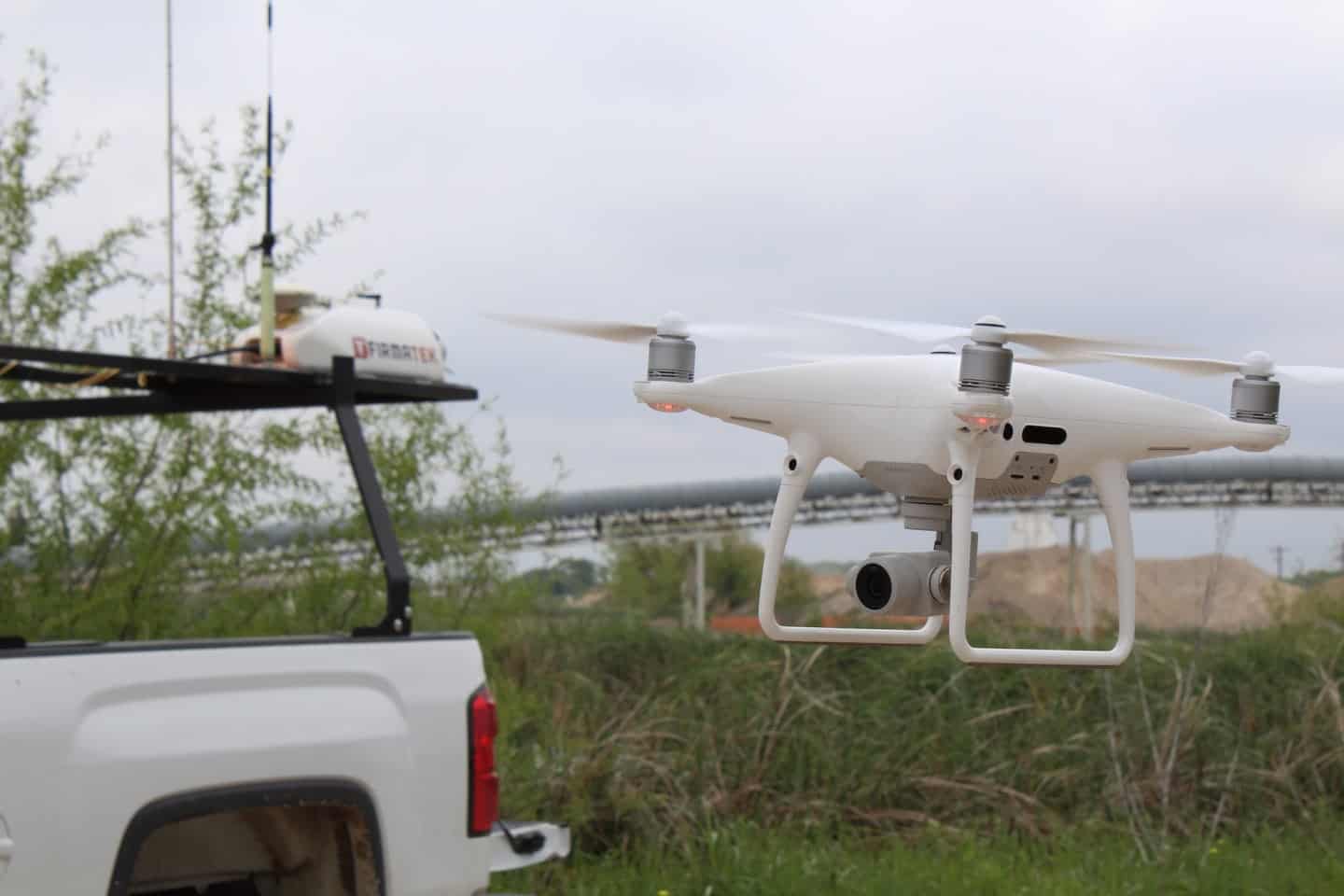By Lauren Elmore, president of Firmatek, published in Unmanned Aerial Online
Drones may be a relatively new technology, but artificial intelligence (AI) is already taking the controls. Autonomous drones are beginning to see use in jobs that require smooth, consistent flying, such as deliveries, and NASA and Google have even teamed up to experiment with how autonomous drones compare to human pilots when racing against each other. They discovered that even though humans won the race in the end, they needed to spend more time practicing before they were able to outspeed the autonomous drones.
AI is becoming a force to be reckoned with in the drone industry. Right now, though, AI has an even more important task than providing autonomous flight: processing data collected in the field and turning it into actionable insights.
Now, once a mission is set up in a flight app to capture all relevant areas, the operator can merely press a button and the drone will fly the mission. Processing the data collected, though, is more involved and requires stitching photos and manually picking out ground control points. Removing this step with AI will be groundbreaking for those who use drones in their businesses to gain insights.
Many companies are making progress toward having AI pick out common features such as control points. Machine learning software is also able to identify and count different types of objects, and these rapidly developing technologies promise to automate what is currently a tedious, time-consuming job. In the short term, AI will continue to tackle the lowest-hanging fruit, automating the most basic and repetitive tasks.
In areas that require more complex decision-making, humans will remain in charge for the foreseeable future. Delivering actionable insights to clients may become a more simplified process, but it still requires human experience and expertise. In the aggregates industry, for example, AI software can have a hard time identifying piles of various shapes, sizes and colors. In the complex, constantly changing environment of a quarry, AI can identify specific objects such as trucks, but its ability to measure complex and changing piles is more limited.
Machine learning relies on refining methods as the system processes huge amounts of data. Because drone adoption is still in its infancy, the amount of data is the limiting factor. As more data becomes available, technology will rapidly improve, providing significant benefits for many industries.
1. Improved Efficiency
An industrial drone armed with a variety of cameras and sensors can gather upward of 70 terabytes of data in a single flight. As machine learning improves, this wealth of data can be mined to produce insights into just about anything – e.g., equipment status, agricultural production and surveillance.
Drone flights will be directed by algorithms that dictate where information should be collected, allowing them to collaborate with other drones to accomplish tasks and ensure they’re automatically where they need to be.
2. New Insights
Tasks that used to be cost-prohibitive – such as counting pallets at a mulch yard – will be automated, giving business owners new insights into their inventory and revenue streams that they could rarely afford before. These automated counting procedures will be a staple of drone capabilities.
Because drones powered by AI will automatically track inventory, they can also automate procurement, meaning supply chains will be able to respond to inventory changes in real time. The businesses that take advantage of these capabilities will be far more agile than the competition.
3. New Revenue Sources
Large companies such as GE, Intel and Microsoft are investing heavily in designing machine learning systems that optimize manufacturing. The payoffs are huge and include a reduction in labor costs and an improvement in quality, along with faster production and fewer unplanned interruptions.
AI has enormous potential, and there will likely be few industries that aren’t impacted by the continuous progress in the machine learning space. The complexity involved in many aspects of drone flight make it a natural fit for the incorporation of AI. Automation improvements in the immediate future will streamline the time-intensive process of turning raw data into useful information, freeing up human workers to use their experience and exercise their decision-making prowess that today’s AI lacks.
Drones and artificial intelligence will not replace human employees – they’ll simply allow humans to take on more challenging tasks that can’t be performed by a machine. Simple, repetitive tasks can be delegated to technology while humans are left to make important strategic decisions, which ultimately improves output while saving money at the same time.


